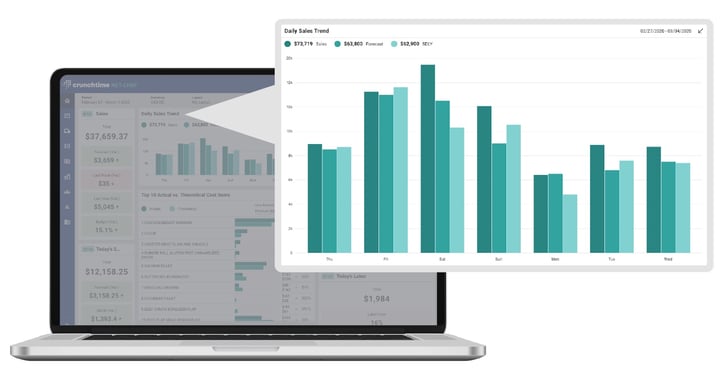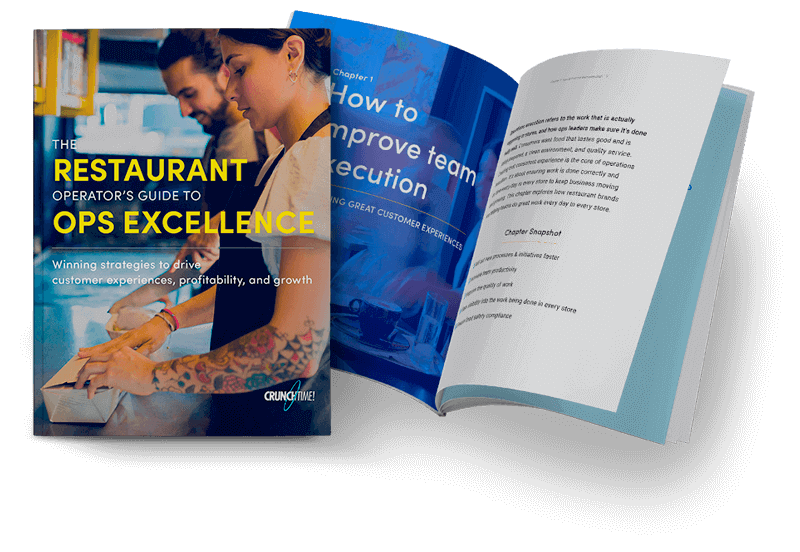
- Home
- Crunchtime Blog
- The ROI of Ops Management: 5 Value Drivers to Know and Use

The ROI of Ops Management: 5 Value Drivers to Know and Use
The restaurant industry is always changing and operates at a constant high pace. As a result, it can be easy to lose sight of certain value drivers, keeping locations from operating at maximum efficiency. Crunchtime’s Steve Larsen was recently joined by Senior Director of Ops Services at SPB Hospitality, Michael Matos, along with Executive Chef and VP of Culinary for SSP America, Chuck Hatfield, for a webinar discussing some of these important value drivers.
To help you demonstrate ROI across inventory and labor management, we’ve outlined five key takeaways from the discussion:
1. PurchasingBeing able to properly track a location’s purchases is absolutely essential to running the business efficiently. Not only is it essential to be able to effectively track the pricing of purchases, it is equally important to be able to place large amounts of orders in a timely manner. This is especially true when it comes to restaurants with many locations or a diverse amount of ingredients required for the menu offerings. By utilizing electronically integrated bid sheets and vendor orders, it allows the restaurant to seamlessly replenish inventory while examining prices to ensure the best value.
2. InventoryA restaurant that fails to accurately and efficiently count inventory is a restaurant that leaves potential profits on the table. This is why having a mobile app to manage inventory is so crucial. By increasing the efficiency with which you can take inventory, it frees up managers and directors to invest more time in other pressing issues around the restaurant.
“Once we had the storage locations organized and sequenced, we introduced Crunchtime’s Counter mobile app to our teams, and our restaurants cut the amount of time that they spent counting their inventory in half. It was virtually giving an hour to an hour and fifteen minutes back to their day.” - Michael Matos, Senior Director of Ops Services, SPB Hospitality
3. COGSA common pitfall for restaurant management is spending too much time worrying about factors that can not be controlled, something Michael Matos refers to as “chasing ghosts.” By utilizing tools such as focused waste entry and the theoretical = actual flag, managers can avoid chasing these so-called ghosts. He uses the example of focusing on actual controllables, rather than wasting time trying to calculate a theoretical amount for something volatile, such as how much ketchup will be used. They can instead focus their energy on simply controlling the things they actually have the ability to control, rather than spending time and resources trying to predict something.
4. LaborLabor is one of the biggest costs that restaurants need to manage in order to be profitable. By having a real-time idea of productivity, you have the capability to better manage labor percentage. With a detailed view of the day's labor, you can better review and correct potential oversights such as overlaps, incorrect punches, or long shifts.
“Our time clock files are remediated into Crunchtime every fifteen minutes, so we have a real-time idea of our productivity and labor percentage throughout the day. Those are huge assets in managing the business.” - Michael Matos, Senior Director of Ops Services, SPB Hospitality
5. SalesA great way to drive value in sales is through effective reporting. Access to accurate and timely reports that can be customized is essential to maximizing sales. This is because they allow the user to give restaurants additional guidance around product volumes and needs, along with helping to reduce waste.
“The thing I love about BizIQ is that it’s reporting on steroids. It’s customizable, you can combine different aspects from purchasing to usage in one report using a dossier functionality.” - Chuck Hatfield, Executive Chef and VP of Culinary, SSP America
The best way to separate your business from the competition in the fast-paced restaurant industry is by identifying and taking advantage of certain value drivers. These are just a few examples that were discussed when Michael Matos and Chuck Hatfield joined Crunchtime’s Ops Management webinar. To gain more insight into these important value drivers, view the full webinar here.
Share this post
Related


Labor Law Compliance: 21 Questions to Keep Your Restaurant in Check


